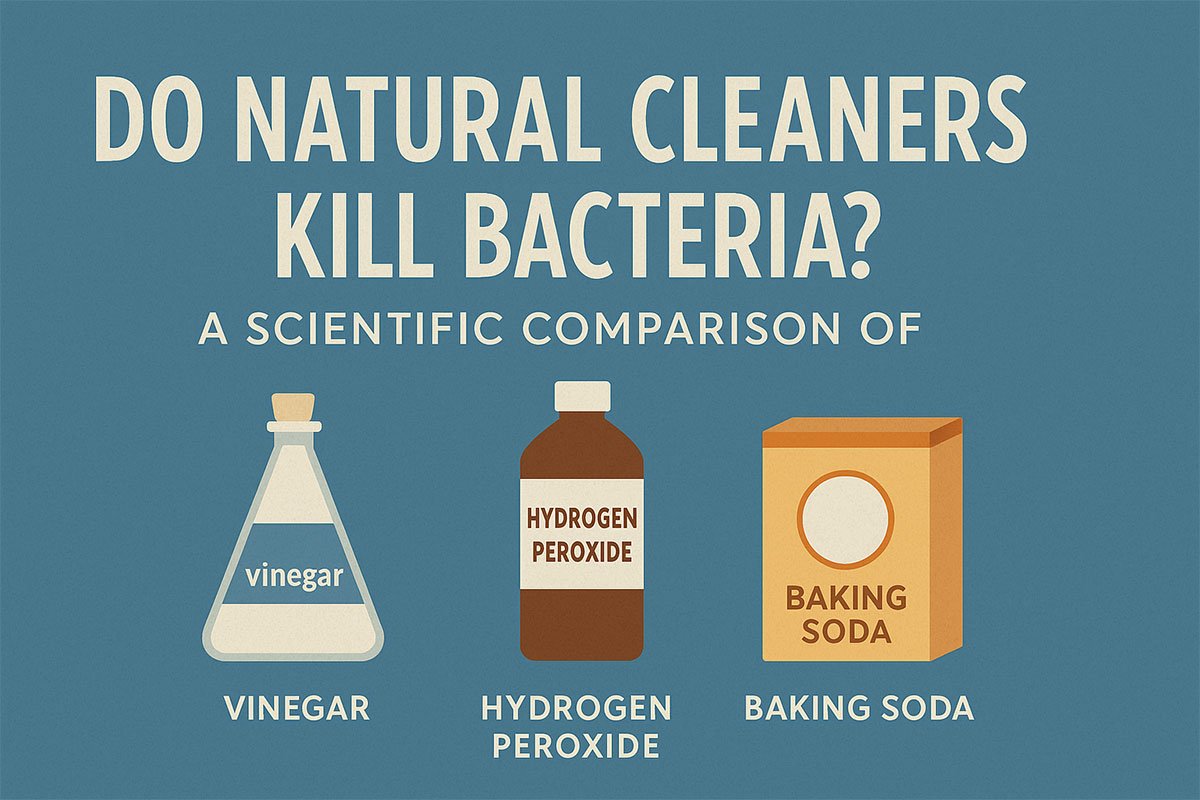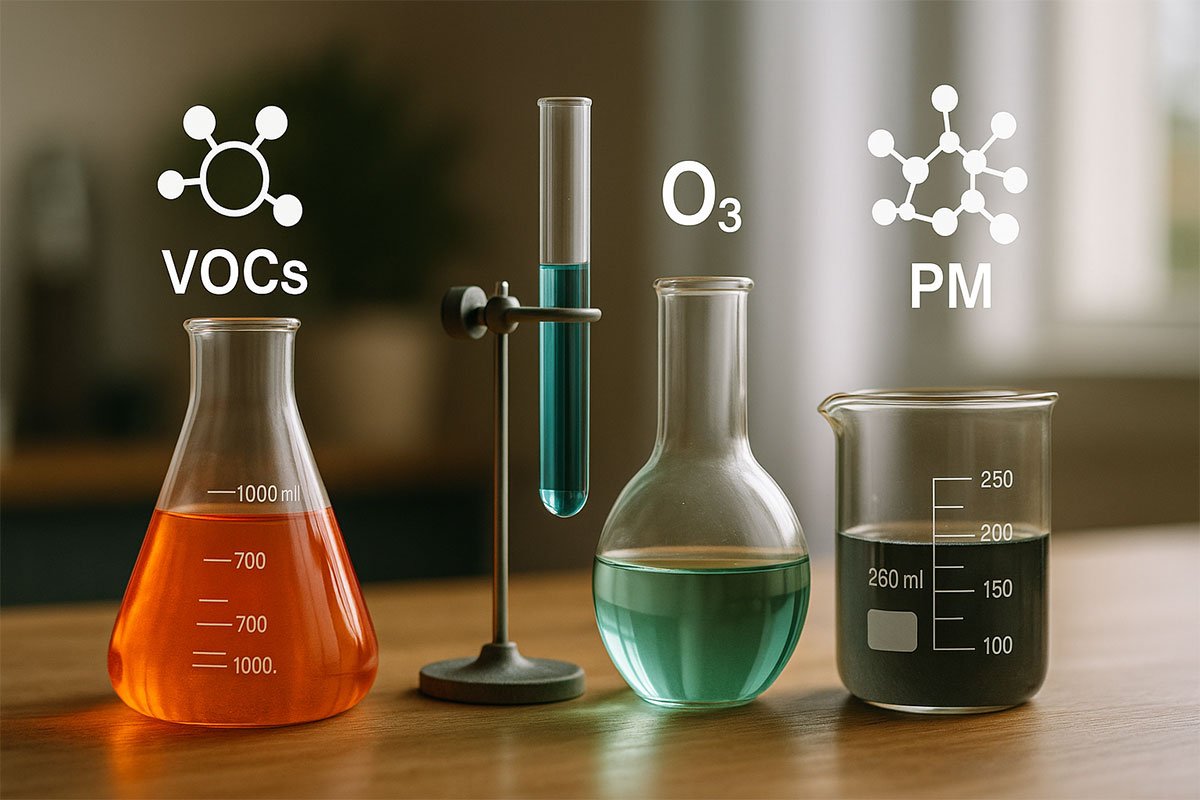A Scientific Comparison of Vinegar, Hydrogen Peroxide & Baking Soda
For decades, natural cleaning methods have gained popularity among homeowners looking for affordable, non-toxic, and environmentally friendly alternatives to traditional chemical disinfectants. Vinegar, hydrogen peroxide, and baking soda are three of the most commonly used household cleaning agents—and each is widely promoted as a natural antibacterial or disinfecting solution. However, the science behind how these substances work reveals that while some natural cleaners can indeed kill bacteria or deactivate viruses, others are far less effective than people assume. Understanding how each substance performs, the environments in which they work best, and the microorganisms they can or cannot eliminate is essential for maintaining a truly hygienic home.
Microbiology and environmental health research has consistently shown that not all cleaning agents are equal. “Cleaning” and “disinfecting” are not the same process, and many natural cleaners only perform one of the two. Cleaning removes dirt, organic matter, and debris. Disinfecting kills or inactivates microorganisms like bacteria, viruses, fungi, and spores. A substance that cleans well may not disinfect effectively—and vice versa. In the case of natural cleaners, hydrogen peroxide is the most scientifically supported disinfectant in the group, while vinegar, despite its reputation, is primarily a cleaning and deodorizing agent but not a registered disinfectant. Baking soda, meanwhile, is an excellent abrasive and deodorizer but has limited antibacterial capabilities on its own.
Homeowners often turn to natural cleaners because they avoid harsh fumes, reduce chemical exposure, and cost far less than commercial products. But relying solely on natural cleaners to control pathogens requires a clear understanding of their strengths and limitations. Misunderstanding these differences can lead to the false assumption that a home is disinfected when harmful microorganisms are still present.
To understand these differences properly, it’s useful to examine each cleaner’s chemical properties and how they interact with bacteria and other pathogens. Vinegar—most commonly distilled white vinegar—contains about 5% acetic acid, which can inhibit the growth of some bacteria but does not reliably kill many pathogens responsible for illness. Hydrogen peroxide (3%), on the other hand, produces free radicals that destroy cell membranes, DNA, and essential proteins, making it an effective disinfectant for a variety of microorganisms when used correctly. Baking soda (sodium bicarbonate) is mildly antimicrobial in certain conditions, but its true strength lies in abrasion and odor neutralization rather than pathogen control.
Because homeowners frequently rely on these cleaners for everything from cutting boards to bathroom surfaces, understanding when they work and when they don’t can significantly improve hygiene and safety inside the home. The following list summarizes the general cleaning and antibacterial performance of each natural cleaner based on scientific research.
How Effective Are Natural Cleaners? A Quick Breakdown
- Vinegar (5% acetic acid):
- Effective for cutting grease, removing mineral deposits, and deodorizing
- Weak antibacterial action—does NOT reliably kill viruses or many harmful bacteria
- Not approved by the EPA as a disinfectant
- Hydrogen Peroxide (3%):
- Strong disinfectant capable of killing bacteria, viruses, and fungi
- Works best when surfaces stay wet for several minutes
- Breaks down harmlessly into water and oxygen
- Baking Soda:
- Removes dirt through abrasion and neutralizes odors
- Minimal antibacterial ability—does not kill pathogens effectively on its own
- Works best when combined with vinegar for cleaning, not disinfecting
While this overview provides a starting point, the science behind each substance reveals a more detailed and nuanced picture. Vinegar’s acetic acid content does have some antimicrobial properties, but these properties are relatively weak compared to EPA-approved disinfectants. Studies show that vinegar can inhibit or slow bacterial growth for some species, particularly E. coli or Salmonella under certain conditions, but the kill rates are inconsistent and often insufficient for household disinfection. Vinegar is highly effective at dissolving limescale and removing residues, which makes surfaces easier to sanitize afterward, but it should not be used as a primary disinfectant on surfaces that can harbor pathogens—especially in kitchens and bathrooms.
Hydrogen peroxide stands out as the most effective natural disinfectant among the three. When applied to surfaces, it reacts to produce hydroxyl free radicals capable of destroying bacterial cell walls, deactivating viruses, and killing fungi. Its broad-spectrum antimicrobial activity is well documented, and it is even used in medical and laboratory settings. Hydrogen peroxide is most effective when used at 3% concentration and when the surface remains visibly wet for at least 1 minute for many bacteria and up to 5–10 minutes for tougher microorganisms. Because hydrogen peroxide breaks down into water and oxygen, it leaves no harmful residue and is safe for most household cleaning tasks.
Baking soda’s antimicrobial activity is mild at best. While some microorganisms are sensitive to pH changes caused by sodium bicarbonate, most bacteria and viruses survive exposure. Baking soda excels in mechanical cleaning: scrubbing sinks, ovens, ceramic surfaces, and grout. It also neutralizes acidic odors. When combined with vinegar, the fizzing reaction can help lift dirt, but the mixture does NOT increase disinfecting power—in fact, the chemical reaction neutralizes much of the acetic acid and bicarbonate, leaving mostly water and carbon dioxide.
The second half of the article introduces more detailed guidance on how and when to use natural cleaners safely and effectively. The list below outlines specific scenarios where each natural cleaner performs best—and where it should not be used if disinfection is required.
When Each Natural Cleaner Is Effective (and When It Isn’t)
- Vinegar—Best Uses:
- Removing hard water stains
- Cutting grease and soap scum
- Cleaning glass and mirrors
- Deodorizing laundry and fabrics
- Surface cleaning before disinfecting
- Cutting boards used for raw meat
- Bathroom surfaces prone to mold or pathogens
- High-touch areas requiring disinfection
- Killing viruses
- Hydrogen Peroxide—Best Uses:
- Disinfecting countertops, toilets, faucets, and doorknobs
- Sanitizing cutting boards
- Treating mold patches on hard surfaces
- Cleaning children’s toys safely
- Whitening grout and tile
- Delicate fabrics (can cause bleaching)
- Some stone surfaces (may etch)
- Freshly waxed or polished surfaces
- Baking Soda—Best Uses:
- Scouring sinks, bathtubs, ovens, and cooktops
- Deodorizing refrigerators, carpets, and shoes
- Cleaning grout with a scrub brush
- Removing baked-on food residues
- Disinfecting kitchens or bathrooms
- Killing bacteria or viruses
- Sanitizing pet-related surfaces
Despite their limitations, natural cleaners still play an important role in home maintenance, especially when used as part of a two-step cleaning approach often recommended by environmental health experts: clean first, then disinfect. Cleaning removes organic matter—like grease, food residue, dust, and biofilm—that protects bacteria and viruses from disinfectants. Once debris is removed, hydrogen peroxide can be used to disinfect effectively. This two-step method is widely supported in scientific literature and is the most effective way to combine natural and chemical-free solutions for everyday home hygiene.
Another important consideration is surface compatibility. Vinegar should not be used on natural stone surfaces like marble, granite, or limestone because the acetic acid can etch the surface. Baking soda can scratch some materials if used too aggressively. Hydrogen peroxide, while generally safe, may discolor fabrics or porous materials. Homeowners should always test natural cleaners on a small, inconspicuous area before wide application.
In addition to cleaning performance, many people choose natural cleaners for environmental or health reasons. Vinegar, baking soda, and hydrogen peroxide do not leave behind harmful chemical residues, do not emit strong fumes, and do not contribute to indoor VOC buildup. This makes them excellent choices for routine cleaning, especially for families with young children, people with asthma, or anyone sensitive to chemicals. However, when it comes to killing pathogens, these substances vary widely in effectiveness, and homeowners should rely on hydrogen peroxide when natural disinfection is required.
Ultimately, natural cleaners can form the foundation of a healthy, low-toxicity cleaning routine—but only when their real capabilities are understood. Vinegar and baking soda excel at cleaning surfaces, removing buildup, deodorizing, and preparing surfaces for disinfection. Hydrogen peroxide is the only natural cleaner among the three that functions as a reliable disinfectant for home use. By using each substance for the tasks it performs best, homeowners can maintain cleanliness without harsh chemicals, while still ensuring that harmful bacteria and viruses are effectively controlled when necessary.
Scientific Sources
- Centers for Disease Control and Prevention (CDC) – “Chemical Disinfectants: Guidance for Home Disinfection”
https://www.cdc.gov/infectioncontrol/guidelines/disinfection - National Institutes of Health (NIH) – Hydrogen Peroxide Antimicrobial Research
https://pubmed.ncbi.nlm.nih.gov - Environmental Protection Agency (EPA) – List of Registered Disinfectants & Guidance on Acetic Acid
https://www.epa.gov/pesticide-registration/list-n-disinfectants-coronavirus-covid-19




